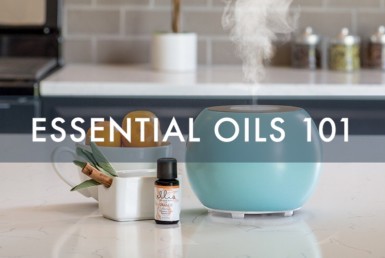GREEN Topic: Alternative Pesticides – Integrated Pest Management
Technology Snapshot & Benefits:
Integrated Pest Management (IPM) is an effective and environmentally sensitive alternative to pesticide use. Pesticides, as defined by the U.S. Environmental Protection Agency (EPA), are “any substance or mixture of substances intended for preventing, destroying, repelling, or lessening the damage of any pest.” Because of the many efforts to phase out the older, hazardous pesticides, IPM has proven itself across the country as a pest control method that drastically reduces health and environmental risks.
According to the EPA, “IPM is the coordinated use of pest and environmental information with available pest control methods to prevent unacceptable levels of pest damage by the most economical means and with the least possible hazard to people, property, and the environment.” IPM applies an array of methods to control pests using a series of pest management evaluations, decisions, and controls. Information is gathered about the biology of the plant to be protected and is then used in the design of a pest issue solution. The EPA encourages homeowners, businesses, and school districts across the country to adopt IPM practices, which are cost effective and environmentally sensitive.
The EPA states, “Before a pesticide can be marketed and used in the United States, the Federal Insecticide, Fungicide, and Rodenticide Act (FIFRA) requires that the EPA evaluate the proposed pesticide to assure that its use will not pose unreasonable risks of harm to human health and the environment. This regulation involves an extensive review of health and safety information.” Biochemical pesticides, or “biopesticides,” include naturally occurring substances that control pests, microorganisms that control pests (microbial pesticides), and pesticidal substances produced by plants containing added genetic material, called plant-incorporated protectants (PIPs).
Estimated Cost Savings:
Integrated pest management practices are among the least costly of available pest control methods. IPM costs are lowered because the program focuses on using pesticides as a last resort.
Issues:
Significant knowledge of the plant being protected is required to put an IPM program into place. The IPM plan cannot be used the way other pesticides are, and doing so can produce disappointing results. In addition, this method often requires more effort to implement and maintain. Consult your local pest contractor before embarking on an IPM project to ensure quality long-term results.
Currently, national certification does not exist for food growers using IPM, as the U.S. Department of Agriculture developed for organic foods.
Getting It Done:
Anyone with pest problems can use the IPM approach and apply it to both agricultural and non-agricultural settings, such as the home, garden, and workplace. IPM is a continuum of pest management assessments that include understanding the pests and their habits then evaluating the results of an action plan. For example, practicing IPM growers follow four steps:
1. Set an action threshold. Ask “at what level do pests become an economic threat?”
2. Monitor and identify pests. Many organisms are innocuous. By identifying pests accurately, appropriate control decisions can coincide with action thresholds.
3. Prevention. IPM programs work to prevent pests from threatening a space. This may mean using control methods, such as crop rotations, selecting pest-resistant crops, or planting pest-free rootstock, that present no risk to people or the environment.
4. Control. If control is required, less risky choices come first in IPM programs. Employing highly targeted chemicals and mechanical controls (trapping, weeding) is less risky than the last-resort broadcast spraying of non-specific chemicals.
Homeowners can contact their local U.S. Department of Agriculture Cooperative Extension Services office for advice on practicing IPM in home gardens and landscaping.
Videos On This Topic:
Garden Pests (5:32) – National Geographic Green Homes – The natural inclination when gardening is to kill all bugs and insects to prevent them from ruining the plants. However, some of these “pests” are actually beneficial as they actually kill other bugs that could be more harmful to your garden. In this video from National Geographic Green Homes, find out ways to manage your garden without eliminating helpful bugs and insects while minimizing damage to the earth.
Source: EcoBroker.com


Join The Discussion
You must be logged in to post a comment.